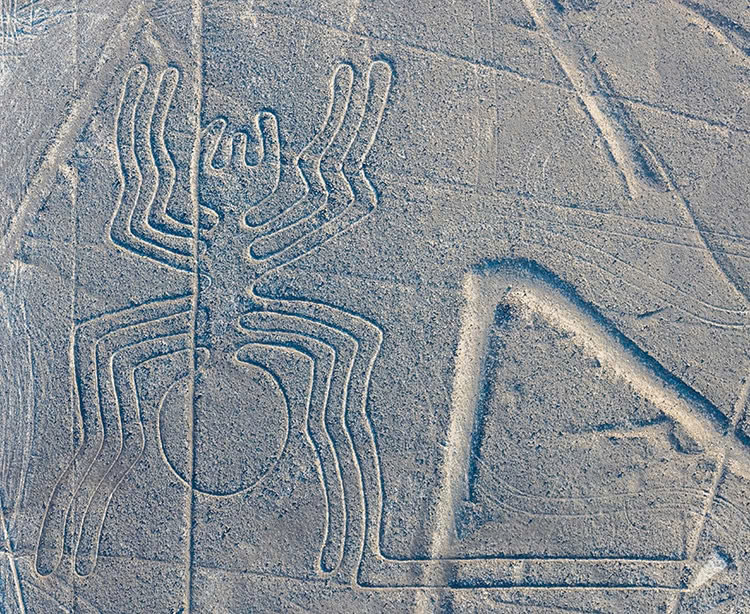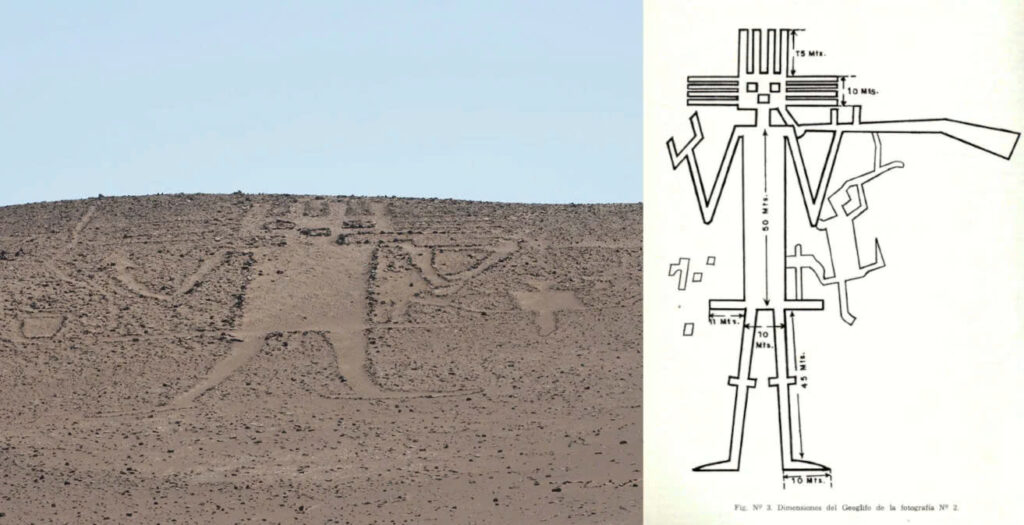Introduction

In the heart of Chile’s Atacama Desert lies a mysterious figure that has fascinated archaeologists and historians for centuries. The Atacama Giant, stretching an impressive 119 meters (390 feet) in length, holds the distinction of being the world’s largest prehistoric anthropomorphic geoglyph, standing as a testament to the ingenuity of ancient South American civilizations.
The Desert Canvas
A Natural Gallery of Ancient Art

The Atacama Desert, known as Earth’s driest non-polar desert, spans nearly 1,000 miles along the Chilean and Peruvian coast. This harsh landscape serves as an unlikely canvas for over 5,000 geoglyphs, created between 800 CE and the 16th century. These ancient artworks line pre-Hispanic trade routes once traversed by llama caravans, suggesting a deep connection between commerce and culture.
A Diverse Collection of Designs

The desert’s vast expanse showcases an incredible variety of geoglyphs, including:
- Geometric patterns like stepped rhombuses and concentric circles
- Human figures engaged in various activities
- Animal representations including llamas, lizards, and monkeys
- Religious and astronomical symbols
The Art of Creating Geoglyphs
Three Distinct Techniques

Ancient artists employed three main methods to create these remarkable designs:
- Additive (positive) – Building up designs using carefully placed rocks and materials
- Extractive (negative) – Scraping away topsoil to reveal differently colored ground beneath
- Combination – Utilizing both techniques in a single design
Preservation Through Time

The Atacama’s extremely dry climate has played a crucial role in preserving these ancient artworks, allowing them to survive for over a millennium. This remarkable preservation mirrors similar phenomena worldwide, such as the Uffington Horse in the United Kingdom’s considerably wetter climate.
The Giant’s Purpose
An Astronomical Calendar

Created between 1000 and 1400 CE, the Atacama Giant is believed to have served as a sophisticated astronomical guide. The rays extending from the figure’s head, while resembling a ceremonial headdress, aligned with the moon’s position to help ancient peoples track seasonal changes and predict rainfall patterns.
Cultural Significance

While the exact purpose of many Atacama geoglyphs remains debated, scholars suggest multiple potential functions:
- Navigation aids for llama caravans
- Religious and ceremonial significance
- Astronomical observations
- Cultural markers for ancient civilizations
A Global Context
The Nazca Connection
The Atacama Giant shares fascinating parallels with Peru’s famous Nazca Lines, created between 500 BCE and 500 CE. These earlier geoglyphs, known for their distinctive linear style and diverse animal representations, have sparked similar debates about their purpose, from astronomical functions to irrigation systems.
Conclusion

The Atacama Giant stands as more than just an ancient artwork – it represents the technological achievements, cultural practices, and astronomical knowledge of pre-Hispanic civilizations. As modern technology enables deeper study of these remarkable creations, the giant continues to guard its secrets while inspiring new generations of researchers and visitors alike.
